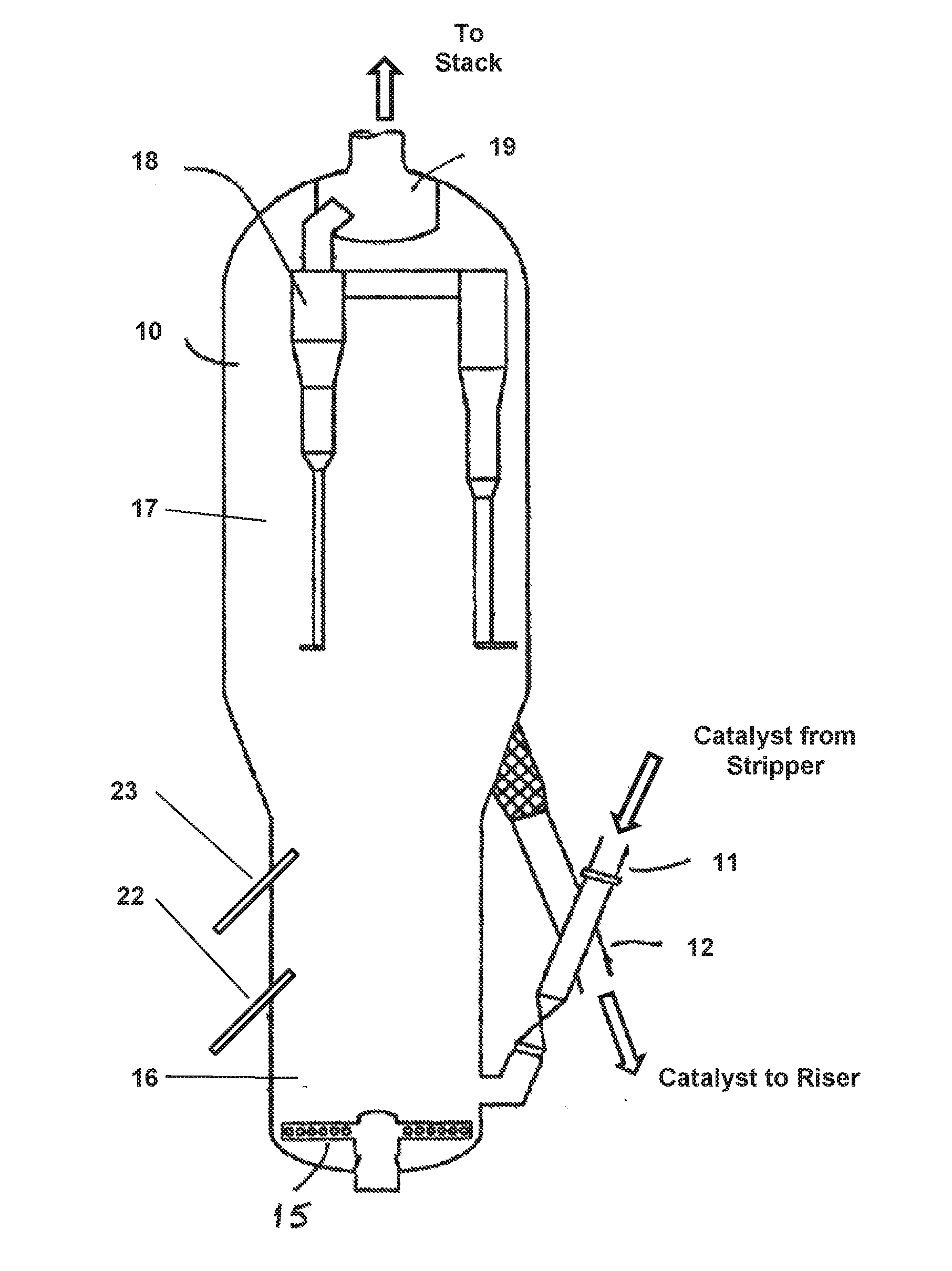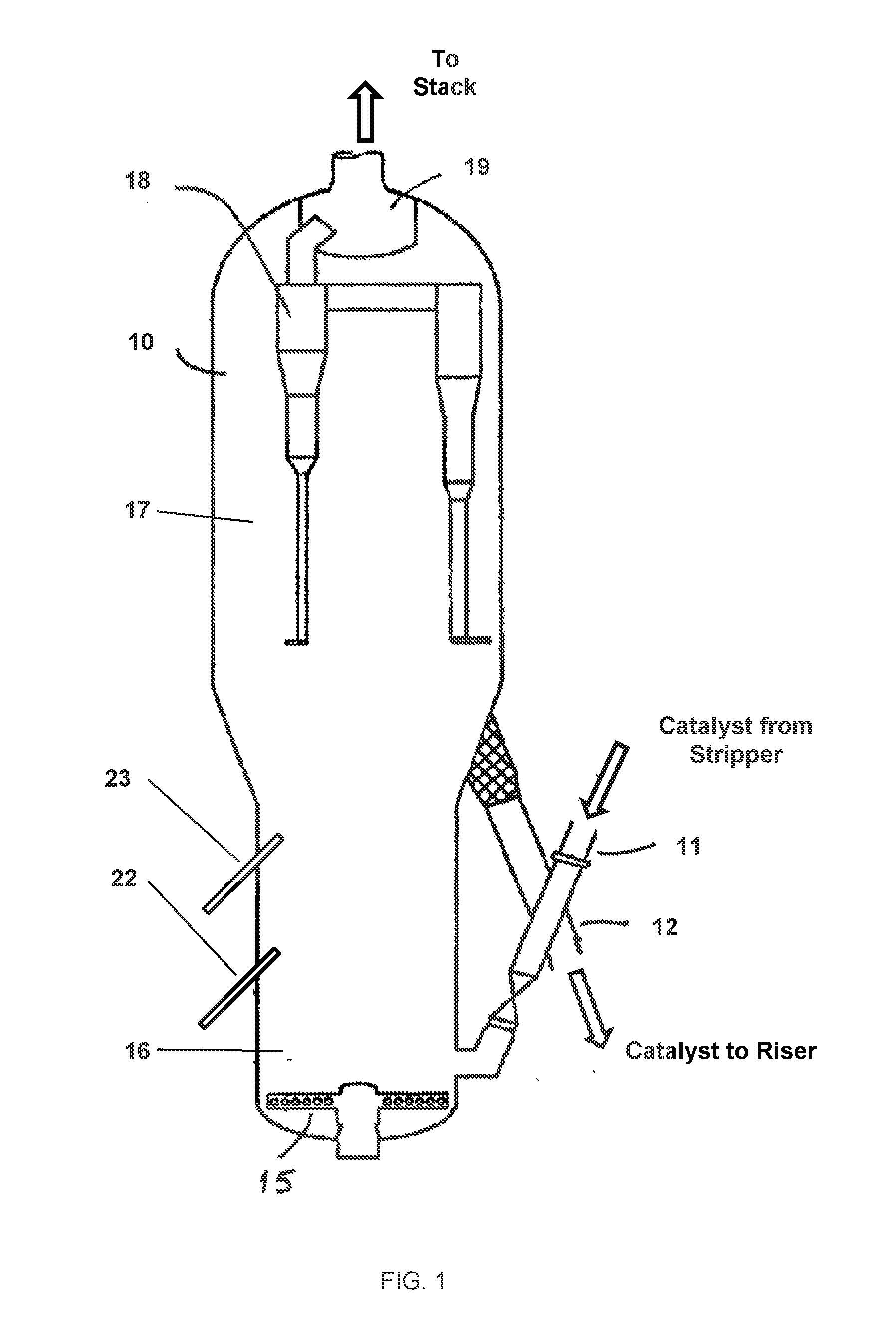Fluid catalytic cracking with supplemental heat
a catalytic cracking and flue gas technology, applied in catalytic cracking, cracking process, hydrocarbon oil treatment, etc., can solve the problems of increasing the amount of coke generated, and increasing the yield of liquid products, so as to reduce the co2 emission, increase the heat release of regenerators, and the effect of slow reaction
- Summary
- Abstract
- Description
- Claims
- Application Information
AI Technical Summary
Benefits of technology
Problems solved by technology
Method used
Image
Examples
Embodiment Construction
[0013]With the current economic conditions (primarily in the USA) natural gas is a significantly economically advantaged fuel, while incremental ‘discretionary coke’ generated and burned in an FCC regenerator is potential liquid product of higher value. In addition, increased political pressure on decreasing greenhouse gas emissions drives toward using higher hydrogen content fuels; methane is the highest hydrogen content fuel. Methane releases about 7% more heat per unit of air consumed than does a typical FCC coke (at ˜7% hydrogen in coke); it does that while producing about 40% less CO2 per unit quantity of heat released. Burning methane to heat balance the unit, instead of the normal practice of burning incremental ‘discretionary coke’, allows recovery of that ‘discretionary coke’ as liquid products while reducing unit emissions not only of CO2 but also of NOx and SOx from the regenerator. The substitution of higher hydrogen content material for indigenous coke increases the hea...
PUM
| Property | Measurement | Unit |
|---|---|---|
| boiling point | aaaaa | aaaaa |
| boiling point | aaaaa | aaaaa |
| enthalpy | aaaaa | aaaaa |
Abstract
Description
Claims
Application Information
 Login to View More
Login to View More - R&D
- Intellectual Property
- Life Sciences
- Materials
- Tech Scout
- Unparalleled Data Quality
- Higher Quality Content
- 60% Fewer Hallucinations
Browse by: Latest US Patents, China's latest patents, Technical Efficacy Thesaurus, Application Domain, Technology Topic, Popular Technical Reports.
© 2025 PatSnap. All rights reserved.Legal|Privacy policy|Modern Slavery Act Transparency Statement|Sitemap|About US| Contact US: help@patsnap.com


